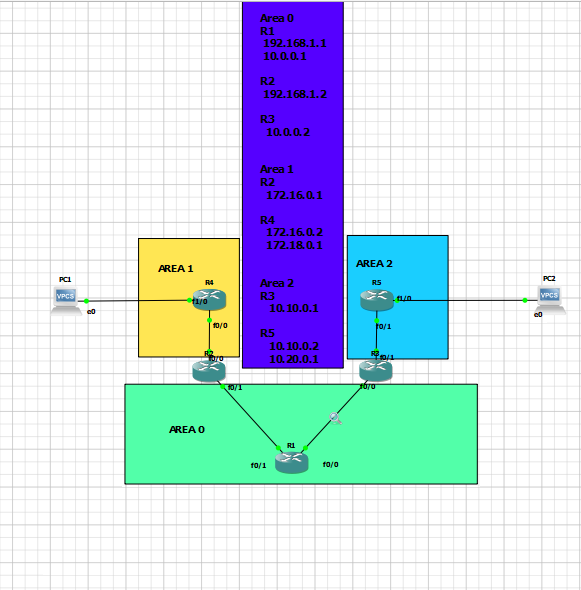
OSPF – Beginner
<AIMS>
5 Routers connect to each other, By using Dynamic routing which enable PC1 can ping PC2. Using Wireshark tools to find OSPF Exchange packet as below. In stub area, what will the LSA packet being different than non stub area. Multi area is applied in this lab, [Back bone area 0 ] [ R2 & R4 in area 1] [R3 & R5 in area 2]
- Hello (discover neighbors)
- DBD (database description)
- LSR (link state request)
- LSU (link state update)
- LS ack (link state acknowledges)

<CONFIGURATION>
Configuration for Router 1 to Router 5, you can find it in my github link below. Mainly it is to enable OSPF Area 0 backbone in R1, R2, R4, and Area 1 and 2. https://github.com/yourlifeuk/devs-automate/tree/main/Others/OSPF%20Project%201

<PROBLEM THAT I HAD>
- I can’t telnet my PC2 at my GNS3, it may be my computer ram issues. Therfore PC1 is to ping R5 10.20.0.1 Intereface instead.
- For a beginner to find OSPF packet by using wireshark. It takes time and you need to monitor the right interface at the right Router.
<RESULT>
At the end result, Using dynamic routing “OSPF”. PC1 can ping PC2. It is because Dynamic routing protocol which plays the game, it telling the router how to reach the final destination. In Figure 2.1, you can see “Ip Routing Table”, routing is learned by OSPF “O” “O IA”. In Figure 3.1, the wireshark records is shown, OSPF exchange packet, LSU packet you can find LSA different type of advertised by the router.
- Figure 1.1 – it is Topology
- Figure 2.1 – After configure for all Router, Show ip route in R1.
- Figure 3.1 – Wireshark records about OSPF exchange packet
- Figure 4.1 – The Ping result

